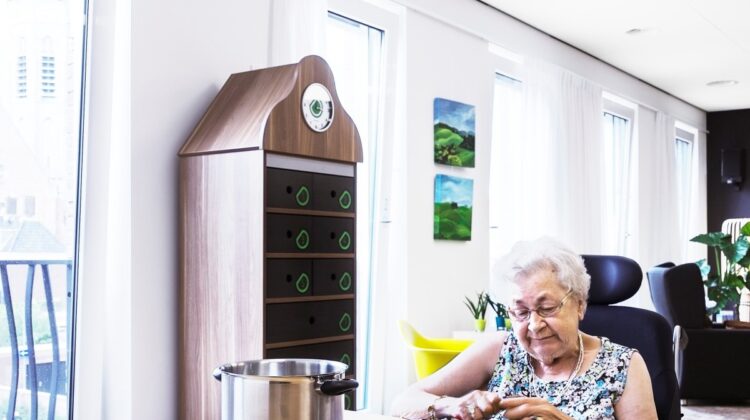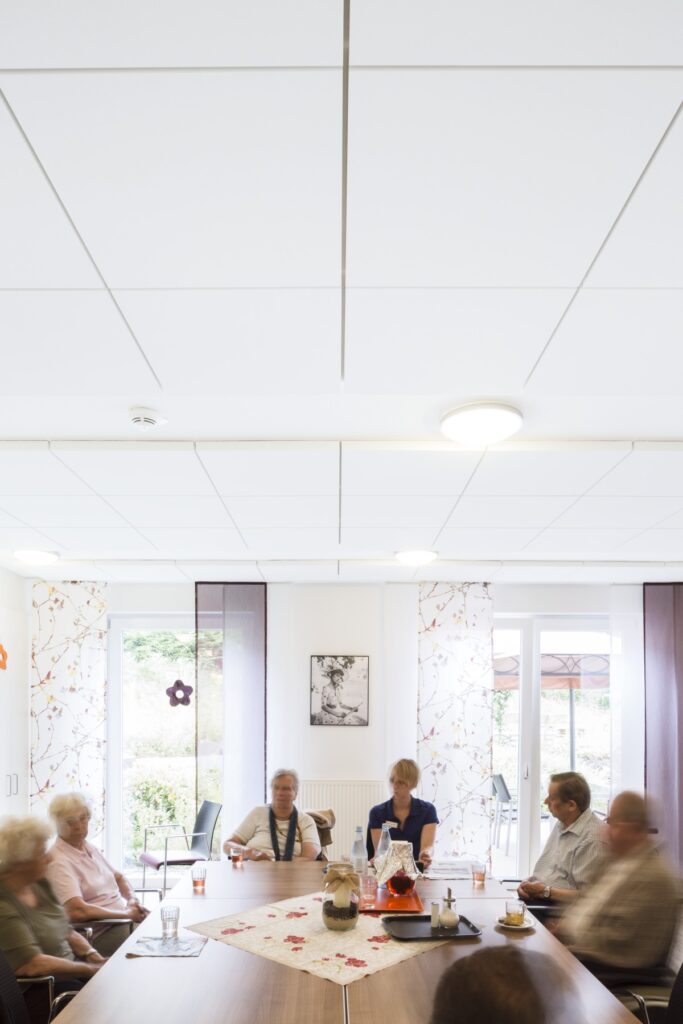
The sound environment of a building plays an important role for those with dementia. We have been working to understand the extent for some time with various different bodies. Including commissioning a literature review with Salford University of existing research in this field to help assess the impact of noise on people with dementia.
What is dementia?
Dementia is an umbrella term for a collection of symptoms that affect the brain,. And it can an impact on a person’s memory, mobility, perception, communication and hearing.
Whilst there is no cure for dementia, it is important to create a healthy, positive built environment in which people can thrive and enjoy a good quality of life.
How does acoustics impact people with dementia?
With regard to acoustics; it is said that of all the senses, hearing is the one that has the most significant impact on people with dementia in terms of quality of life.
Noise can be distressing and isolating. People with dementia often experience constant background noise. Some people with dementia have extreme noise sensitivity, which increases stress levels, anxiety, confusion, blood pressure, heart rate and fatigue.
The perceptual problems experienced by people with dementia mean they may lose the ability to accurately interpret what they hear, finding certain sounds frustrating.
A recent evidence based review (Marquardt et al (2014) found a link between high noise levels and ‘unwanted behaviour’ in people with dementia. In other studies noise has been linked to a lack of participation and social isolation. However not all sound is “bad” as pleasant sounds were found to be ‘positively stimulating.’ The review by Marquardt concluded that good acoustics should be:
‘one of the key architectural efforts in care environments for people with dementia’
The link between hearing loss and dementia
There are also links between hearing loss and dementia. Hearing loss is the most common form of disability found in Europe. It has a huge impact on how we relate to people and spaces leading to social isolation. It is also more common as we age. A study at John Hopkins School of Medicine alongside other research institutions found that for every 10 decibels of hearing loss a person had there was a 27% increase in the likelihood of developing dementia in the follow up period.
Some ways to design an acoustically calming space:
We feel that whilst more research on defining appropriate noise levels for different spaces is needed, some common aspects of acoustic design have been found. They are beneficial in helping to create a calm environment that helps to relieve stress and aids the processing of information.
- Use the building envelope to block intrusive, loud, external noise such as busy traffic, or deliveries.
- Consider sound insulation and sound absorption in corridors to prevent noise intrusion into adjacent rooms.
- Locate bedrooms away from noisy spaces to improve the quality of sleep.
- Provide a quiet room that is not the person’s bedroom, to enable the person with dementia to process information in a space without too many stimuli and to help calm agitated people.
- Visual alarms and silent bell call systems can offer a suitable alternative for those who may be frightened by loud noises. They can also help to minimise overall noise levels and disturbances.
- Consider enhanced visual cues for people with hearing loss as they rely more on the visual sense. Design features that are easy to see and understand aid navigation.
- Use sound absorption in communal and activity spaces to enhance comfort and to improve communication when clear speech is required. Otherwise noise levels can rise quickly.
If you would like more information, a CPD seminar on this subject (UK and Ireland), or a copy of the literature review contact Andrea Harman, [email protected]
More on the senses and dementia in this presentation by German architect and researcher Birgit Dietz.


